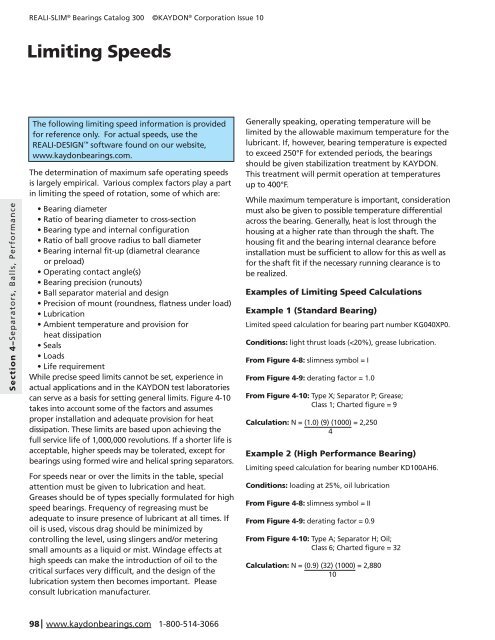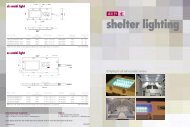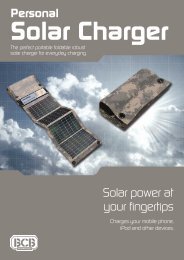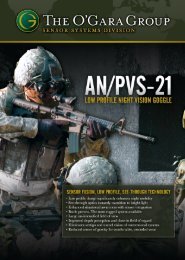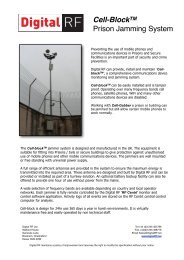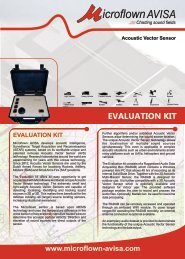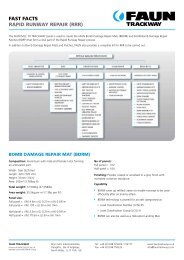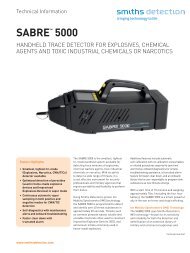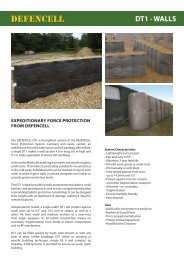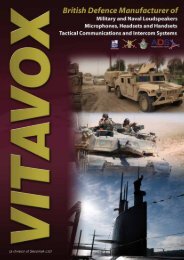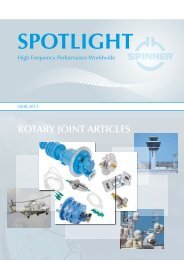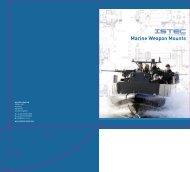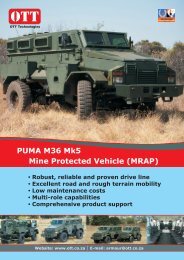Catalog 300 - Kaydon Bearings
Catalog 300 - Kaydon Bearings
Catalog 300 - Kaydon Bearings
Create successful ePaper yourself
Turn your PDF publications into a flip-book with our unique Google optimized e-Paper software.
REALI-SLIM ® <strong>Bearings</strong> <strong>Catalog</strong> <strong>300</strong> ©KAYDON ® Corporation Issue 10<br />
Limiting Speeds<br />
Section 4–Separators, Balls, Performance<br />
The following limiting speed information is provided<br />
for reference only. For actual speeds, use the<br />
REALI-DESIGN software found on our website,<br />
www.kaydonbearings.com.<br />
The determination of maximum safe operating speeds<br />
is largely empirical. Various complex factors play a part<br />
in limiting the speed of rotation, some of which are:<br />
• Bearing diameter<br />
• Ratio of bearing diameter to cross-section<br />
• Bearing type and internal configuration<br />
• Ratio of ball groove radius to ball diameter<br />
• Bearing internal fit-up (diametral clearance<br />
or preload)<br />
• Operating contact angle(s)<br />
• Bearing precision (runouts)<br />
• Ball separator material and design<br />
• Precision of mount (roundness, flatness under load)<br />
• Lubrication<br />
• Ambient temperature and provision for<br />
heat dissipation<br />
• Seals<br />
• Loads<br />
• Life requirement<br />
While precise speed limits cannot be set, experience in<br />
actual applications and in the KAYDON test laboratories<br />
can serve as a basis for setting general limits. Figure 4-10<br />
takes into account some of the factors and assumes<br />
proper installation and adequate provision for heat<br />
dissipation. These limits are based upon achieving the<br />
full service life of 1,000,000 revolutions. If a shorter life is<br />
acceptable, higher speeds may be tolerated, except for<br />
bearings using formed wire and helical spring separators.<br />
For speeds near or over the limits in the table, special<br />
attention must be given to lubrication and heat.<br />
Greases should be of types specially formulated for high<br />
speed bearings. Frequency of regreasing must be<br />
adequate to insure presence of lubricant at all times. If<br />
oil is used, viscous drag should be minimized by<br />
controlling the level, using slingers and/or metering<br />
small amounts as a liquid or mist. Windage effects at<br />
high speeds can make the introduction of oil to the<br />
critical surfaces very difficult, and the design of the<br />
lubrication system then becomes important. Please<br />
consult lubrication manufacturer.<br />
Generally speaking, operating temperature will be<br />
limited by the allowable maximum temperature for the<br />
lubricant. If, however, bearing temperature is expected<br />
to exceed 250°F for extended periods, the bearings<br />
should be given stabilization treatment by KAYDON.<br />
This treatment will permit operation at temperatures<br />
up to 400°F.<br />
While maximum temperature is important, consideration<br />
must also be given to possible temperature differential<br />
across the bearing. Generally, heat is lost through the<br />
housing at a higher rate than through the shaft. The<br />
housing fit and the bearing internal clearance before<br />
installation must be sufficient to allow for this as well as<br />
for the shaft fit if the necessary running clearance is to<br />
be realized.<br />
Examples of Limiting Speed Calculations<br />
Example 1 (Standard Bearing)<br />
Limited speed calculation for bearing part number KG040XP0.<br />
Conditions: light thrust loads (


